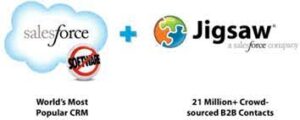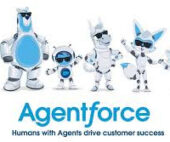The Infrastructure Imperative for AI Evolution
The enterprise landscape stands at an inflection point where AI agents promise autonomous decision-making and adaptive workflows at scale. However, the critical barrier to realizing this potential isn’t model sophistication—it’s architectural. True agentic systems require:
- Seamless data interoperability across enterprise systems
- Dynamic tool orchestration capabilities
- Context-aware information sharing between agents
- Real-time integration with business applications
These requirements fundamentally represent an infrastructure challenge that demands event-driven architecture (EDA) as the foundational framework for agent deployment and scaling.
The Three Waves of AI Evolution
First Wave: Predictive Models
Characterized by:
- Narrowly scoped machine learning applications
- Domain-specific training requirements
- Limited adaptability to new use cases
- High technical barriers to implementation
These deterministic systems excelled at specialized tasks but proved rigid and unscalable across business functions.
Second Wave: Generative Models
Marked by breakthroughs in:
- Cross-domain generalization capabilities
- Natural language understanding and generation
- Creative content production
- Reduced need for specialized ML expertise
However, these models remained constrained by:
- Static knowledge cutoffs
- Limited access to proprietary data
- Inability to incorporate real-time information
- High costs for domain adaptation
Third Wave: Agentic Systems
Emerging capabilities include:
- Autonomous goal-directed behavior
- Dynamic workflow generation
- Real-time environmental adaptation
- Collaborative multi-agent problem solving
This evolution shifts focus from model architecture to system architecture, where EDA becomes the critical enabler.
The Compound AI Advantage
Modern agent systems combine multiple architectural components:
- Cognitive Layer
- LLMs for reasoning and planning
- Specialized SLMs for domain tasks
- Mixture-of-Experts configurations
- Operational Layer
- Tool integration frameworks
- Memory and context management
- Validation and verification systems
- Data Layer
- Real-time retrieval mechanisms
- Enterprise system integrations
- Streaming data pipelines
This compound approach overcomes the limitations of standalone models through:
- Dynamic context incorporation (RAG++)
- Programmatic verification of outputs
- Adaptive tool selection and use
- Continuous learning from interactions
Event-Driven Architecture: The Nervous System for Agents
Core EDA Principles for AI Systems
- Asynchronous Event Processing
- Decouples agent operations from direct dependencies
- Enables real-time responsiveness
- Supports flexible scaling
- Loose Coupling
- Independent agent development and deployment
- Modular system composition
- Technology agnosticism
- Event Sourcing
- Maintains complete action history
- Enables temporal querying
- Supports audit and compliance
- Stream Processing
- Continuous data flow
- Stateful context management
- Complex event pattern detection
Implementation Benefits
- Scalability: Horizontal scaling of agent populations
- Resilience: Fault isolation and recovery
- Flexibility: Dynamic workflow adaptation
- Observability: End-to-end process transparency
Architectural Patterns for Agentic Systems
1. Reflective Processing
<img src=”reflection-pattern.png” width=”400″ alt=”Reflection design pattern diagram”>
Agents employ meta-cognition to:
- Validate intermediate outputs
- Optimize solution approaches
- Self-correct errors
- Justify decisions
2. Dynamic Tool Orchestration
<img src=”tool-use-pattern.png” width=”400″ alt=”Tool use design pattern diagram”>
Capabilities include:
- Context-aware tool selection
- Parallel tool execution
- Result synthesis
- Fallback strategies
3. Hierarchical Planning
<img src=”planning-pattern.png” width=”400″ alt=”Planning design pattern diagram”>
Features:
- Goal decomposition
- Conditional branching
- Resource optimization
- Temporal coordination
4. Collaborative Multi-Agent Systems
<img src=”multi-agent-pattern.png” width=”400″ alt=”Multi-agent collaboration diagram”>
Enables:
- Role specialization
- Distributed problem solving
- Negotiation protocols
- Emergent coordination
The Enterprise Integration Challenge
Critical Success Factors
- Unified Data Fabric
- Real-time access to all enterprise knowledge
- Contextual data enrichment
- Secure information governance
- Tool Ecosystem
- API standardization
- Semantic interoperability
- Usage monitoring
- Orchestration Layer
- Workflow coordination
- Conflict resolution
- Quality control
- Observation Framework
- Performance metrics
- Anomaly detection
- Continuous improvement
Implementation Roadmap
Phase 1: Foundation
- Establish event backbone (e.g., Kafka, Pulsar)
- Implement core data streaming pipelines
- Develop initial agent scaffolding
Phase 2: Capability Expansion
- Integrate critical enterprise systems
- Deploy specialized agent roles
- Implement reflective processes
Phase 3: Optimization
- Introduce collaborative multi-agent workflows
- Deploy advanced planning capabilities
- Establish continuous learning loops
The Competitive Imperative
Enterprise readiness data reveals:
- 48% of IT leaders actively preparing for agent integration
- 33% have advanced implementation plans
- Top adoption barriers center on integration complexity
Early adopters of event-driven agent architectures gain:
- 40-60% faster process adaptation
- 30-50% reduction in integration costs
- 5-10x scalability headroom
The transition to agentic operations represents not just technological evolution but fundamental business transformation. Organizations that implement EDA foundations today will dominate the AI-powered enterprise landscape of tomorrow. Those failing to adapt risk joining the legacy systems they currently maintain—as historical footnotes in the annals of digital transformation.













